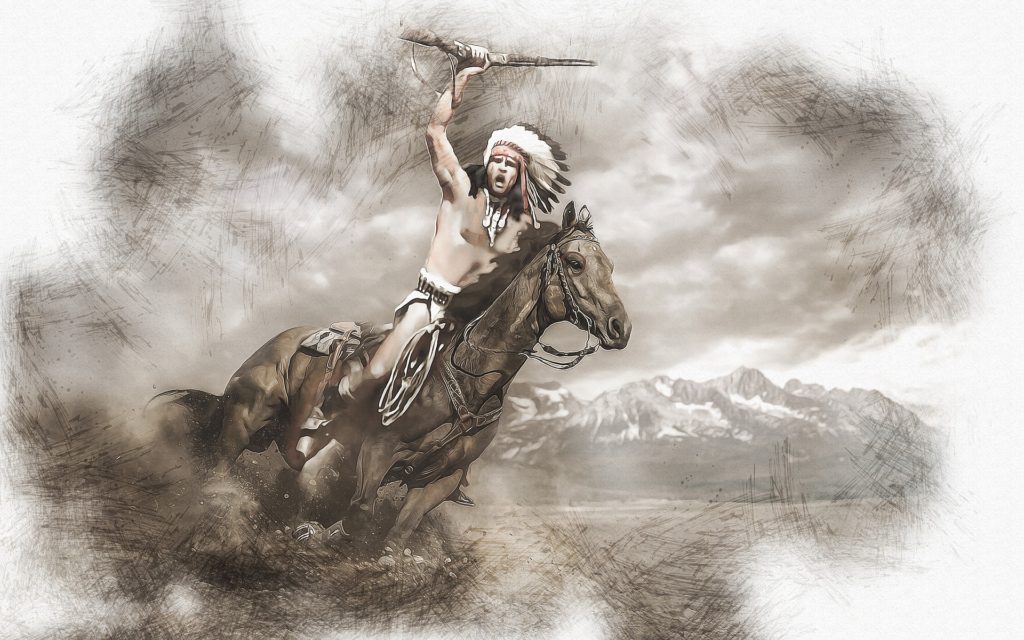According to an interesting article by Alvin M. Josephy, Jr. entitled, “I Will Fight No More Forever,” after the Civil War, white pioneers conquered and exploited the huge frontier between California and the Mississippi River. They began building towns, creating local and state governments, and laid out farms and cattle ranches. The white pioneers who went there were infiltrating Native American lands and hunting grounds. Conflict broke out between the white men and Native Americans. They thought Native Americans were pagans who deserved Christian violence. They didn’t believe Native Americans knew anything about agriculture and should be exterminated.
As a result of the violence, in 1867, the federal government decided to confine Native Americans to small, remote reservations in areas of the West that were spurned by white men. Congress approved the small Native American reservation policy. This kept Native Americans segregated and unequal. Many tribes refused to surrender their hunting grounds, refused to live on reservations and fought back. Between 1869 and 1876, over two hundred battles took place between Native Americans and the United States Army. One famous battle was the fight at the Little Bighorn. It is also known as Custer’s Last Stand. To Native Americans, it was known as the Battle of the Greasy Grass. This armed engagement in Montana was between the Lakota Sioux, Northern Cheyenne, and Arapaho tribes and the 7th Calvary Regiment of the United States Army.
Commander George A. Custer and his army were defeated. He and approximately 268 men were killed. Approximately 55 men were wounded. The Native Americans war leaders were Crazy Horse and Chief Gail. They were inspired by the visions of Sitting Bull. He led his people during years of resistance against U.S. government policies. Approximately 31-135 Native Americans were killed.
According to Josephy, the Native American victory was short- lived. In the fall of 1876, the U.S. Army trapped the Sioux and made them surrender. They were exiled to out of the way reservations in the Dakota Territory. The other Western tribes met the same fate. They were overwhelmed by superior fire power and faced with starvation. White men were exterminating the buffalo. Native Americans used the buffalo for food, clothing, shelter and religious worship. They had no choice but to abandon their way of life and submit to segregation on small reservations in New Mexico, Oklahoma, New Mexico, Oregon, Montana, Idaho, South and North Dakota.
We should have an unvarnished view of American history. Native Americas were heroic, yet played unsung roles. Native Americans were harshly and unfairly treated. The Battle of the little Bighorn was an important Native American victory. The death of Custer and his men outraged many white Americans. The U.S. government subdued the tribes and confined them to reservations. True history was not taught in our school systems.
Little Bighorn Battlefield National Monument honors those who fought on both sides.
Francie Mae. May 12, 2022
References
Battle of the Little Bighorn. Wikipedia. Accessed May 12, 2022.
Oates, Stephen B. Portrait Of America. Fourth Edition. Volume II. Article by Josephy Jr., Alvin M. “I Will Fight No More Forever,” 1987. Houghton Mifflin Company. Boston, Massachusetts.

A fascinating discussion is worth comment. I do believe that you should write more about this subject matter, it may not be a taboo subject but typically folks dont talk about such issues. To the next! Cheers!!
This is the perfect website for everyone who hopes to understand this topic. You realize so much its almost hard to argue with you (not that I actually would want toÖHaHa). You certainly put a new spin on a subject thats been discussed for decades. Great stuff, just great!
Can I just say what a relief to uncover an individual who really understands what theyre talking about on the web. You certainly know how to bring a problem to light and make it important. More people ought to read this and understand this side of the story. I was surprised that you arent more popular given that you most certainly have the gift.